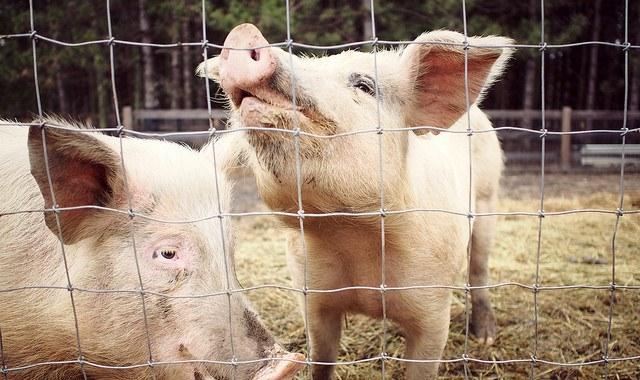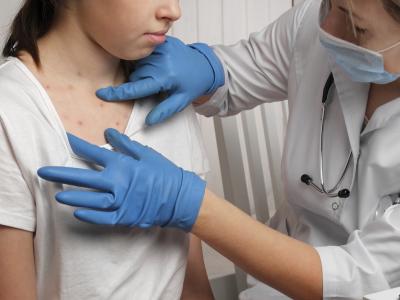New Food and Drug Administration (FDA) guidelines designed to promote the judicious use of antibiotics in food-producing animals contain loopholes that may limit their effectiveness, according to a new report.
The report, released yesterday by the Pew Charitable Trusts, suggests that even after the implementation of the FDA Guidance No. 213 next Jan 1, non-judicious use of antibiotics in food production could remain a problem. The new guidelines call on pharmaceutical companies to voluntarily remove growth promotion from the labels of all medically important antibiotics used in food production and require veterinary oversight for the continued use of these drugs for disease prevention and control. The aim of the new policy is to end the use of medically important antibiotics for growth promotion and reduce overall antibiotic use in food production.
According to the FDA, all companies affected by the rule have committed in writing to make the label changes by the first of the year. But the Pew analysis found that, even after the changes take effect, more than a third of the 389 labels for medically important antibiotics will not fully meet the FDA's judicious use standards. That's because they fail to either place clear limits in how long antibiotics should be used, specify the conditions for which they should be used, or provide appropriate dosing amounts.
Areas of concern
"Our concern is to make sure that these products are used judiciously or appropriately," analysis author and Pew Charitable Trusts officer Karin Hoelzer, DVM, told CIDRAP News. "That means making sure that the product is used for the right reasons, that the product is used for the right amount of time…and that the product is used at the right dosage."
Pew's analysis of the 389 labels found that more than 100 lack adequate restrictions on the duration of use, nearly 80 raise concerns about whether the specified indication is judicious, and 65 do not provide a clearly defined dosage. And even if all the antibiotics that currently have labels that include growth promotion are completely removed from the market, Pew found that almost half of the problematic antibiotics in the analysis would remain.
Hoelzer said these loopholes are a concern because they would allow farmers and veterinarians to continue using medically important antibiotics in ways that can contribute to the development of antibiotic resistance. And these are issues in which the FDA has made its position clear. For example, the agency has stated that it believes that medically important antibiotics labeled for "continuous or undefined durations of use" are not consistent with judicious use principles.
The FDA has also said that, when used in disease prevention, medically important antibiotics should be used to target animals at risk for a specific disease. But while most of the analyzed labels indicate usage for a specific pathogen or disease, Hoelzer found that 23 products allowed use for "maintenance of weight gain during disease or times of stress."
"In our opinion, that's essentially the same thing as a growth promotion claim," Hoelzer said. "The way the claim is phrased, it's not at all about making sure the animal gets healthy or stays healthy; it's about making the animal grow faster, and that is not judicious."
The Pew report argues that fixing these problematic labels is manageable. Hoelzer points out, for example, that for many of the products with no defined duration on their label, similar products exist for similar indications in the same animal species that do indicate how many days they should be used. So the information likely exists.
"I think there are multiple potential ways of addressing this, but it's something that absolutely needs to be done," Hoelzer said. Pew estimates that the amount of medically important antibiotics sold for use in food-producing animals grew 23% from 2009 to 2014.
Industry criticism
In response to the report, the Animal Agriculture Alliance, which represents food industry stakeholders, said that the issues raised by the Pew report—particularly duration of use—are addressed in Guidance No. 213, which requires farmers to obtain a prescription from a licensed veterinarian to prevent or treat disease in their animals.
"The duration of use should be dictated by the disease threat," the group said in a statement. "We cannot tie the hands of veterinarians by removing their ability to make medical decisions appropriate to all situations."
The group also noted that the current labels on antibiotics approved by the FDA are based on scientific research and data that have shown the products to be safe and effective.
But Gail Hansen, DVM, a consultant on public health and animal medicine, says that because veterinarians in general have not been heavily involved in antibiotic prescribing for food-producing animals, FDA guidance on duration of use, specific indications, and dosage is important—just as it is in human medicine.
"Speaking as a veterinarian, I don't think we have all the really good answers," Hansen said. "I don't know why veterinarians would be any better at this than physicians would be."
Hansen said she believes the FDA fully intends to address the questions around duration of use after the new policy goes into effect. In September, the agency announced that it was soliciting comments regarding the establishment of "appropriately targeted" durations of use of antibiotics administered to food-producing animals. Comments are due by Dec 13.
See also:
Oct 4 Pew Charitable Trusts issue brief
Oct 4 Animal Agriculture Alliance statement
FDA Guidance No. 213























